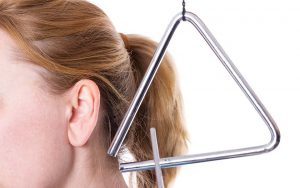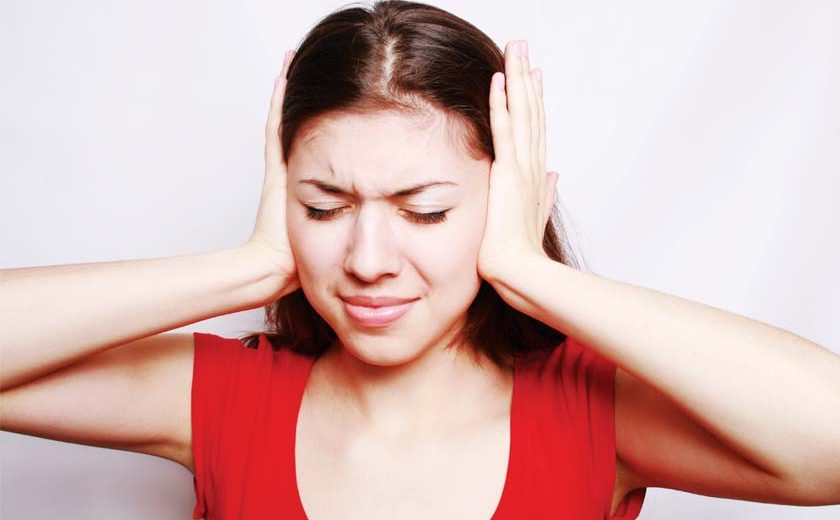What is Tinnitus?
Tinnitus is the perception of noise, often described as ringing, buzzing or humming; in the ears and not originating from an external source. For some people, it is a continuous noise while for others it’s perceived occasionally.
Some individuals also report it to have a pulse like rhythm. There is no firm conclusion on how tinnitus is produced but we know that it is produced by the hearing system.

Saravanan Selanduray
Senior Audiologist and Manager
Speech & Hearing Department,
Sunway Medical Centre
In most cases, tinnitus is only perceived by the individual alone and is classified as subjective tinnitus. However, there is a very small percentage of patients in whom their tinnitus could also be heard by other individuals. This tinnitus is usually produced by the blood flow as well as the musculo-skeletal system in in the ear or head region. This tinnitus is classified as objective tinnitus.
Is it a common condition?
The U.S. Centers for Disease Control estimates that nearly 15% of the general public — over 50 million Americans — experience some form of tinnitus. A recent systematic review, conducted by McCormack et al (2016), on worldwide prevalence found a huge degree of variation. They stated, “Overall tinnitus prevalence figures for each study ranged from 5.1% (Quaranta, Assennato, and Sallustio, 1996) to 42.7% (Gibrin, Melo, and Marchiori, 2013). Tinnitus severity was assessed in 16 studies. The prevalence of bothersome tinnitus ranged from 3.0% (Michikawa, Nishiwaki, Kikuchi, Saito, Mizurati, Okamato, and Takebayashi, 2010) to 30.9% (Kim, Lee, An, Sim, Park, Kim, Lee, Hong, and Choi, 2015). Even comparing those studies that used the most common type of tinnitus question (‘tinnitus lasting for more than five minutes at a time’), the prevalence figures reported for current tinnitus vary widely from 11.9% (Fuiji, Nagata, Nakamura, Kawachi, Takatsuka, Oba, and Shimizu, 2011) to 30.3% (Sindhusake, Mitchell, Newall, Golding, Rochtchina, and Rubin, 2003).”
We can agree that it is a very common condition. In our centre, we would conduct hearing evaluation on average of 9 to 10 patients weekly with the main complaint of tinnitus.
What causes Tinnitus?
Tinnitus is not a disease by itself but rather a symptom of an underlying condition. This is similar to fever which is a symptom of an infection. However, in the case of tinnitus the underlying condition is many and varied.
The most common cause of tinnitus perception is hearing loss. With hearing loss, a person loses sensitivity of hearing for soft sounds. Thus, soft background noise are not perceived anymore in the frequency regions of the hearing loss. The patient than starts noticing tinnitus which usually has a pitch corresponding to the frequency region of the hearing loss. The tinnitus is also reported to be more noticeable with worsening hearing loss. This could be explained by an analogy of a candle light. The darker the room, the brighter the candle seems although there is no increase in the actual brightness of the candle.
Tinnitus can also be perceived after exposure to loud noise. Our hearing system has a self-protective mechanism which is called adaptation. Basically, the hearing system triggers responses that reduce the sensitivity of the hearing system when exposed to loud noise. Due to this temporary decrease in hearing sensitivity, we would perceive tinnitus. However this usually disappears within 24 hours after the noise exposure. Constant exposure to loud noise on the other hand would cause a permanent hearing loss and this would in turn result in constant tinnitus.

Tinnitus is also caused by changes in the body’s metabolism or physiology. This could be triggered by diseases like diabetes, high blood pressure, atherosclerosis and others. It can also be triggered by medication taken to treat diseases such as antibiotics, aspirin and other prescription drugs. Tinnitus is also triggered by diet changes like increased caffeine or salt intake. It could also be triggered by stress, pregnancy, menopause or insomnia. Smokers also have reported higher incidence of tinnitus.
Other than that, injury to the ear, head or neck region also might cause tinnitus. Tinnitus has also been reported by patients with Temporomandibular Joint Disorder.
In most cases, if the cause is identified and treated, the perception of tinnitus would diminish or disappear altogether. However, in most cases, the causes are permanent or complex in nature.
Managing Tinnitus
Tinnitus management starts with a diagnosis of the cause of the condition that triggered the tinnitus. Proper diagnosis of tinnitus requires the collaboration of the audiologist and the ENT Surgeon. The audiologist would conduct audiological evaluations which may include audiometry, tympanometry, acoustic reflexes test, speech audiometry and otoacoustic emissions tests. Based on this results, a diagnosis of a hearing loss, if present, which would specify the severity and type of loss can be made. The ENT surgeon would then conduct a full medical evaluation and combine it with the audiological results to diagnose the cause of the hearing loss or in its absence, possible causes of the tinnitus.
If the cause of the hearing loss can be medically managed, the ENT surgeon would propose appropriate treatment options. This might include surgery or medical treatment. Surgical intervention might be suggested when the cause of the tinnitus is a conductive hearing loss such as middle ear effusion, otosclerosis or tumors. It may also be suggested in sensorineural hearing loss due to growths, blood flow related problems or others. Medical treatment may be offered in inflammatory diseases, controlling metabolic conditions or psychological issues.
If the cause of the hearing loss is permanent, the patient would be referred back to the audiologist for hearing aid fitting. In most cases, hearing aids would allow the patient to hear soft background sounds again and naturally mask tinnitus. In other cases, most hearing aids nowadays have noise generators built in which would enable the patient to select a specific programme that would produce noise to mask tinnitus.
If the cause is unknown and the patient complaints of severe disabling issues due to the tinnitus, an experienced audiologist may be able to offer specific therapy to manage tinnitus. This includes Tinnitus Masking Therapy, Tinnitus Retraining Therapy (TRT), Tinnitus Counselling and others. For some of this treatments, the audiologist might run further tests like Tinnitus Pitch Matching, Minimum Masking Level or Loudness Discomfort Level. This tests would provide information needed by the audiologist such as the best type of masking noise, loudness of the masking noise etc to decide on the type of treatment that best works with the patient.
In most patients with mild tinnitus, the best advice would usually be to ignore the tinnitus if the cause is ruled out to be medically significant. In our clinic, we routinely suggest to have speakers playing natural sounds like rain, ocean, water flow, forest etc when the tinnitus is most bothersome; usually in quiet environments, before sleep or just immediately after waking up.
In cases of more severe tinnitus, the usual complaint is not about how loud the tinnitus is but how severely it impacts the person’s live. There are questionnaires which would quantify the impact of tinnitus and provide suggestions on management. There are a lot of resources available online to help you cope with tinnitus and its impact on your life. However, a visit to an ENT and audiologist if you notice tinnitus would still be the best option to manage it.


